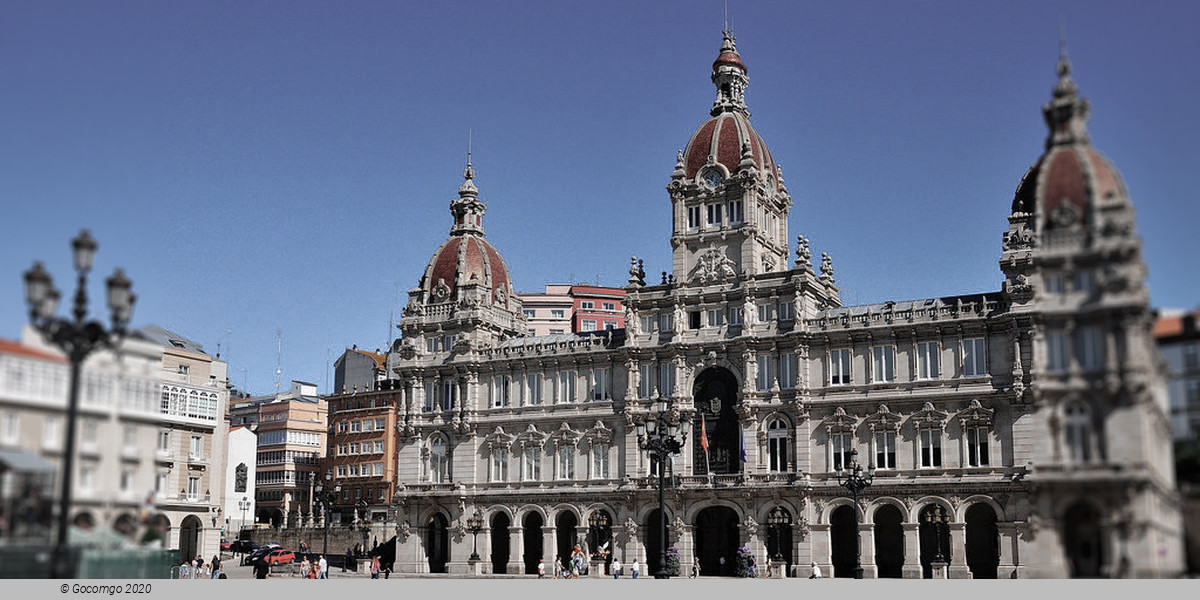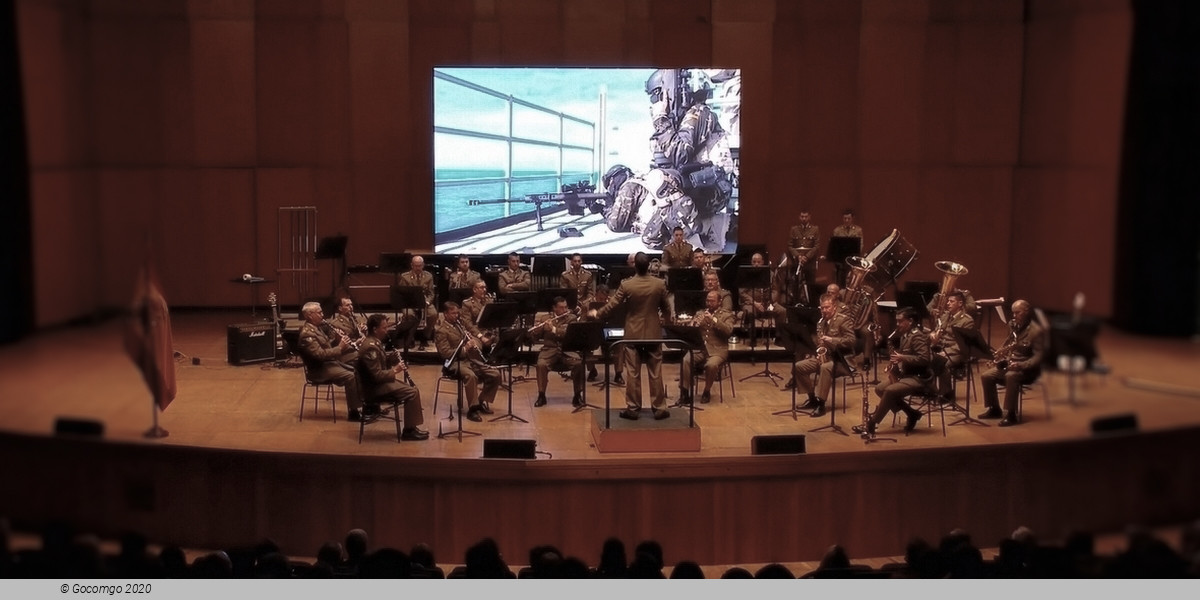Venues in La Coruna

La Coruna (A Coruña) is a city and municipality of Galicia, Spain. It is the second most populated city and the second most populated municipality in the autonomous community and seventeenth overall in the country. The city is the provincial capital of the province of the same name, having also served as the political capital of the Kingdom of Galicia from the 16th to the 19th centuries, and as a regional administrative centre between 1833 and 1982, before being replaced by Santiago de Compostela.
History
Prehistory
A Coruña spread from the peninsula where the Tower of Hercules stands, onto the mainland. The oldest part, known popularly in Galician as Cidade Vella (Old City), Cidade Alta (High City), or the Cidade (City), is built on an ancient Celtic castro. It was supposedly inhabited by the Brigantes and Artabrians, the Celtic tribes of the area.
Roman times
The Romans came to the region in the 2nd century BC; they made the most of the strategic position and soon the city became quite important in maritime trade. In 62 BC Julius Caesar came to the city (known at the time as Brigantium) in pursuit of the metal trade, establishing commerce with what are now France, England, and Portugal. The town began to grow, mainly during the 1st and 2nd centuries (when the Farum Brigantium Tower of Hercules was built), but declined after the 4th century and particularly with the incursions of the Vikings, which forced the population to flee towards the interior of the Estuary of O Burgo.
Middle Ages
After the fall of the Roman Empire, A Coruña still had a commercial port connected to foreign countries, but contacts with the Mediterranean were slowly replaced by a more Atlantic-oriented focus. The process of de urbanization that followed the fall of the Roman Empire also affected A Coruña. Between the 7th and 8th centuries, the city was no more than a little village of laborers and sailors.
The Muslim invasion of the Iberian peninsula left no archaeological evidence in the northwest, so it cannot be said whether or not the Muslim invaders ever reached the city. As Muslim rule in the early 8th century, Galicia consisted little more than a short-lived overlordship of the remote and rugged region backed by a few garrisons, and the city was no more than a village amidst Roman ruins, the invaders showed the same lack of interest in the ruined city as they did generally for the region.
As the city began to recover during the Middle Ages the main problem for the inhabitants was the Norman raids, as well as the ever-present threat of raids (razzias) from Al-Andalus to the south. During the 9th century, there were several Viking attacks on the city, called at that time Faro or Faro Bregancio.
In the year 991, King Vermudo II began the construction of defensive military positions on the coast. At Faro, in the ruins of the Tower of Hercules, a fortress was built, which had a permanent military garrison. To pay for it, he gave power over the city to the bishop of Santiago. The bishop of Santiago became the most important political post in Galicia and remained so until the 15th century.
In 1208, Alfonso IX re-founded the city of Crunia. Some privileges, such as those of disembarking and selling salt without paying taxes, were granted to the city, and it enjoyed a big growth in fishing and mercantile business. The city grew and extended through the isthmus. In 1446 John II of Castile granted to A Coruña the title of "City". The Catholic Monarchs established the Royal Audience of the Kingdom of Galicia in the city, instead of Santiago. A Coruña also became the headquarters of the Captaincy General. Later, in 1522, Charles V conceded to the city of A Coruña the license to establish the House of Spices, being this the port chosen by Jofre Garcia de Loysa to set his expedition to conquer the Moluccans.
In the late Middle Ages, before the expulsion of the Jews in 1492, a thriving Jewish community created a rich artistic heritage in the city. The most lavishly illuminated Hebrew Bible in medieval Spain was created in A Coruña in 1476. Known as the Kennicott Bible, it is currently housed in the Bodleian Library, Oxford.
Modern period
During the Modern period, the city was a port and center for the manufacturing of textiles. In 1520, King Carlos I of Spain, met in the courts of A Coruña and embarked from its harbor to be elected Emperor of the Holy Roman Empire (as Charles V). He allowed the government of the Kingdom of Galicia to distribute spice in Europe between 1522 and 1529. Commerce with the Indies was allowed between 1529 and 1575. San Antón Castle was built as a defense of the city and its harbor.
From the port of Ferrol in the Province of A Coruña, Philip II left to marry Mary Tudor in 1554, and much later, in 1588, from the same port, the Spanish Armada would set sail to the Spanish Netherlands and England.
In the following year, during the Anglo-Spanish War, Francis Drake besieged A Coruña but was repelled, starting the legend of María Pita, a woman who took her dead husband's spear, killed the flag bearer of the British forces and rallied support to deny a breach in the wall to the enemy.
In the 16th and 17th centuries, the wars of the Spanish monarchy caused a great increase in taxes and the start of conscription. In 1620, Philip III created the School of the Boys of the Sea. In 1682 the Tower of Hercules was restored by Antúnez.
19th century
A Coruña was the site of the Battle of Corunna during the Peninsular War, on 16 January 1809, in which British troops fought against the French to cover the embarkation of British troops after their retreat. In this battle, Sir John Moore was killed.
Spanish resistance during the Peninsular War was led by Sinforiano López, and A Coruña was the only Galician city that achieved success against the French troops. French troops left Galicia at the end of May 1809.
During the 19th century, the city was the center of anti-monarchist sentiment. On 19 August 1815, Juan Díaz Porlier pronounced against Fernando VII in defense of the Spanish Constitution of 1812. He was supported by the bourgeoisie and the educated people. But on 22 August he was betrayed. He was hanged in the Campo da Leña two months later. In all the 19th-century rebellions, A Coruña supported the liberal side. A Coruña also played an important role in the Rexurdimento, and there were founded the Galician Royal Academy in 1906 and the Brotherhoods of the Galician Language in 1916.
Regarding the economy, in 1804 the National Cigarette Factory was founded, and there the workers' movement of the city had its origins. During the 19th century, other businesses (glass, foundries, textiles, gas, matches, etc.) were slowly established, but it was maritime trade and migrant travel that attracted Catalan, Belgian, French, and English investments. The Bank of A Coruña was founded in 1857. The new provincial division of 1832 also influenced economic development.
20th and 21st centuries
At the beginning of the 20th century, A Coruña had about 45,000 inhabitants. The Great Depression, Spanish Civil War severely affected the economy from the 1930s to the mid-1950s. The 1960s and early 1970s saw a dramatic economic recovery, which was part of the wider Spanish Miracle. As elsewhere in Galicia, A Coruña attracted a massive influx of Galician-speaking rural dwellers, into their quickly developed neighborhoods. The period between 1960 and 1980 saw a big transformation in most areas of the city from being agricultural dwellings to urban districts. The international oil shocks of the mid and late 1970s severely disrupted the economy, causing many bankruptcies and high unemployment until the mid-1980s, when slower but steady economic development was resumed.
Elections of 1931
In the Spanish general elections, 1931, all the political parties knew that the electoral results had important political consequences. The campaign of Unión Monárquica was very important in A Coruña and was supported by El Ideal Gallego. Republicans and socialists constituted a block, made up of ORGA, independent republicans, Spanish Socialist Workers' Party (PSOE), and the Radical Socialist Republican Party.
In the elections, the republican parties obtained 34 of the 39 council seats. The best results were of the ORGA and of the Partido Radical Socialista, and the Radical Republican Party lost a lot of support.
Democracy returns
From 1983 to 2006, the mayor of the city was Francisco Vázquez Vázquez (PSOE), and the city became devoted to services, but he also was criticized because of his being openly against Galician nationalism, favoring the already established Castillian-Spanish social dominance and extending the equally deep-rooted prejudice against Galician language and cultural expression. Another downside of Mr. Vazquez's legacy would be his town-planning policies, with big-money pharaoh-like projects with little social impact (shopping centers, Millenium obelisk, etc.). However, on a positive note, Mr. Vazquez's 23 year-long mandate saw the European-funded Maritime Promenade and the city's Scientific Museums (Casa das Ciencias-Planetario-, Casa dos Peixes-Aquarium and Casa do Home-Domus).
On 20 January 2006 Vázquez was named ambassador to the Vatican City and was later replaced by Francisco Javier Losada de Azpiazu. In the 2007 Municipal Elections, the local government was a coalition of the Socialists' Party of Galicia and the left-wing nationalist Galician Nationalist Bloc party. The city celebrated its first millennium in 2008.
In the 2011 Municipal Elections, the conservative candidate Carlos Negreira (PP) obtained a majority, the first one for the People's Party in the city since the arrival of democracy.
The mayor of the 2015–2019 mandate was Xulio Ferreiro, from the Marea Atlántica ("Atlantic Tide") party, who was elected in 2015 on an anti-corruption mandate. His remit was to improve the town planning of the city rather than to leave it to the mercy of corrupt, unregulated free-market policies which have left a negative legacy in many areas of the municipality. He has widespread support across the region in opposition to a project to sell off the city's port (a legacy of the preceding mayor Carlos Negreira) to a private equity firm, which wants to construct a gated community of high-rise apartment blocks for which there is no real market demand in a city with a population of fewer than 250,000 inhabitants. The plan is to put a covenant on the land and to encourage a civic consultation on the redevelopment of the site.
The current mayor is Inés Rey of PSdeG-PSOE.


